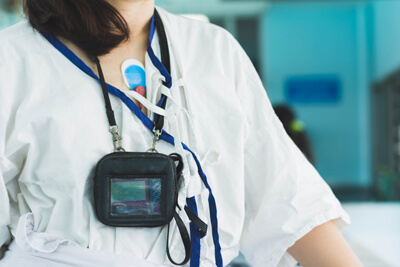
Holter and event monitors serve as essential medical devices designed to capture the heart's electrical activity. Primarily, doctors utilize these monitors to diagnose arrhythmias, which involve irregularities in the speed or rhythm of the heartbeat—manifesting as either rapid, slow, or irregular heartbeats.
In addition to arrhythmia diagnosis, these monitors are instrumental in detecting silent myocardial ischemia, a condition characterized by insufficient oxygen-rich blood reaching the heart muscle, often without accompanying symptoms.
Furthermore, Holter and event monitors play a pivotal role in assessing the efficacy of treatments for arrhythmias and silent myocardial ischemia. Compact and portable, these monitors can be comfortably worn during daily activities, allowing for extended monitoring compared to a standard EKG.
For individuals whose heart rhythm abnormalities occur intermittently,
such as during sleep or physical exertion, the use of Holter or event
monitors significantly enhances the likelihood of capturing these
transient issues.
It's important to note that while similar in function, Holter and
event monitors differ in operation. A Holter monitor continuously records
the heart's electrical activity throughout wear, whereas an event
monitor records activity only at specific intervals during its use.
Interested in being seen by a CareMEDICA provider? Call (203) 672-2800 for our Connecticut offices, and (561) 776-8890 for our Florida office. You can also schedule your appointment using our Healow portal: Connecticut Portal Florida Portal